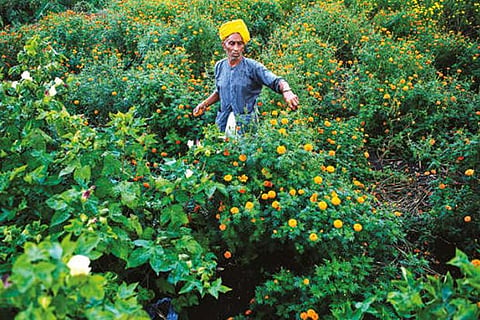

Chennai
In January, the luxury group Kering, owner of Gucci and Saint Laurent (among other brands), was a co-founder of the Regenerative Fund for Nature, aimed at converting 1 mn hectares of land producing raw materials for fashion from regular farmland to regenerative agriculture in five years.
In February, the New Zealand Merino Company announced that it joined with Allbirds, Icebreaker and Smartwool to create the first platform dedicated to regenerative wool. The North Face and Patagonia now tout clothing made of regenerative cotton. And Secteur 6, a new Indian American brand that uses only regenerative-grown materials such as rose-petal silk, is teaming with the streetwear brand Freak City L.A. to produce a capsule collection that includes regenerative cotton graffiti T-shirts that read, “Regenerate or Die.” But what in the world does that even mean? Start at the beginning: What is regenerative farming? It’s like yoga, but for farmland. Advocates describe it as a holistic approach, working with nature, rather than trying to control it. That means forgoing various industrial agriculture practices, which could include pesticides, store-bought fertilisers, tilling or neat little rows of a single crop. Also, no weed-pulling.
Regenerative farmers love “cover crops,” weedy-looking plants such as clover and hairy vetch — hairy vetch! — that help limit the real weeds and are eventually mowed and left to rot as mulch. (Ripping out cover crops or weeds by their roots disturbs micro-organisms under the surface, and the roots serve as food for the soil, anyway.) The idea is to mix different types of plants in the same field, allowing the nourishing cover crops to spread wildly, co-mingling with, say, corn or cotton. It looks messy, but chickens, sheep and cattle get to graze on the edibles, and in return they fertilise the fields with their droppings. Bingo: healthy soil. Organic is about “what you are not spraying,” said Rebecca Burgess, director of Fibershed, a non-profit in California that supports the regenerative-farming movement. You can be an organic farmer and not be regenerative — you can skip the animals, skip the cover crops and instead haul in compost each season.
And you can be regenerative and not be organic. Bambi Semroc, acting head for sustainable lands and waters at Conversation International, said, “Organic is one way of doing this, but there are others, too,” such as reducing the use of agrochemicals. Sometimes, she said, “there aren’t great alternatives.” Fashion is extremely late to the carbon-sequestering party — the food industry was way ahead — but with multiple brands publicly promising to become carbon neutral, it is now firmly committed. Better late than never. Transitioning from conventional to regenerative farming is expensive and time-consuming. Some brands, such as Patagonia, prefer farmers to go organic first. Patagonia is also supporting regenerative cotton farmers with a pilot program in India. The pilot started in 2018 with 165 farmers on 420 acres. This year, it involves 2,260 farmers on 5,248 acres.
The writer is a journalist with NYT©2021
The New York Times
Visit news.dtnext.in to explore our interactive epaper!
Download the DT Next app for more exciting features!
Click here for iOS
Click here for Android